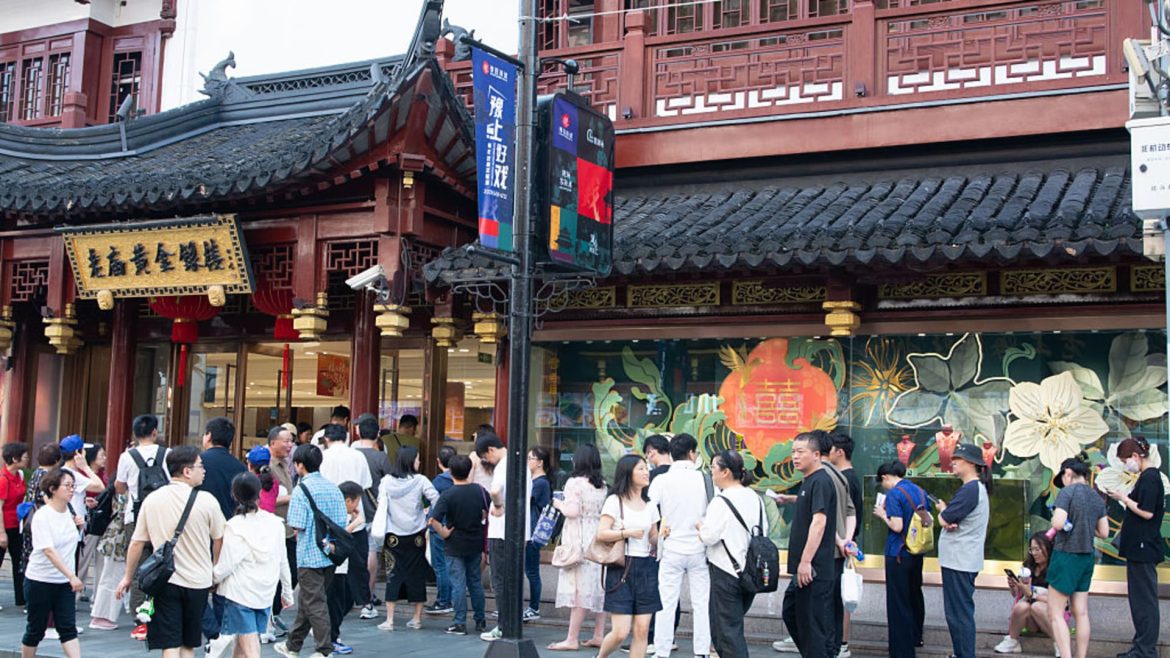Analyzing China’s Economic Landscape: Uneven Performance in Retail Sales and Industrial Output
China’s latest economic data presents a nuanced portrait of its recovery and growth trajectory. While retail sales have shown surprising strength, often beating expectations, industrial output growth has faltered somewhat, delivering mixed signals about the broader economic health of the world’s second-largest economy. This report delves into the current trends in China’s retail and industrial sectors, explores underlying factors, and considers implications for future economic prospects.
—
Retail Sales: An Unexpected Bright Spot
Recent data from May highlights China’s retail sales growth accelerating sharply, reaching the fastest pace since December 2023. Retail sales increased by 6.4% year-on-year in May, surpassing analyst expectations of roughly 3% to 5%, with some estimates anticipating around 5.1%. This marked improvement from previous months, such as April’s 5.1% growth, reflects a surprisingly resilient consumer segment.
Several factors likely contributed to this retail uptick:
– Holiday Boost: Timing with national holidays often stimulates consumer spending, evidenced by an immediate sales uplift in May.
– Pent-Up Demand: As public health concerns from earlier pandemic restrictions fade, consumer confidence may be rebounding, boosting discretionary spending.
– Policy Measures: Although some reports suggest stimulus efforts struggled to fully ignite demand in prior months, the recent data hints at mild positive effects from government support initiatives aimed at sustaining consumption.
However, the strength in retail sales contrasts with earlier frustration over stimulus measures that reportedly failed to spur demand adequately, suggesting that while recovery is underway, it may be patchy and partly reliant on seasonal or temporary factors.
—
Industrial Output: Slowing Growth and Lingering Challenges
In stark contrast with retail performance, China’s industrial output growth has been less robust. May’s industrial production expanded by 5.8% year-on-year, down from 6.1% in April and consistently missing analyst forecasts that leaned closer to 5.9% to 6.0%. This slowdown represents a worrying trend for China’s manufacturing sector, which is a critical engine of economic activity and export growth.
Key observations about industrial output include:
– Missed Expectations: Despite still-positive growth figures, repeated shortfalls against market expectations suggest weakening momentum.
– Property Sector Drag: The persistent slump in China’s property sector compounds manufacturing pressures, as construction and related industries fail to rebound decisively despite policy support.
– Tariff and Trade Tensions: While industrial growth appears somewhat resilient to external pressures such as U.S. tariffs, ongoing geopolitical frictions introduce uncertainties that may be dampening investment and production expansions.
Industrial output’s deceleration is particularly concerning because it signals potential softening competitiveness and export dynamics, crucial factors for sustaining China’s economic prowess on the global stage.
—
Contrasting Economic Signals and Sectoral Implications
The divergence between robust retail sales and cooling industrial output paints a fragmented recovery picture:
– Consumer Sector Resilience vs. Production Challenges: The consumption-led growth narrative gains some traction with these retail figures, indicating internal demand could partially offset export and manufacturing headwinds.
– Policy Effectiveness Under Question: While stimulus measures may be lifting consumer confidence marginally, their ability to reinvigorate industrial activity and property development remains limited.
– Sectoral Imbalances: The property sector’s stagnation and weaker factory output coupled with stronger retail sector performance hint at a shift in China’s economic composition, potentially moving toward more consumption-driven growth, but this transition appears incomplete and uneven.
—
Looking Ahead: Risks and Opportunities
China’s mixed economic data suggest several strategic considerations for policymakers and businesses:
– Enhancing Industrial Competitiveness: Revitalizing industrial production beyond the current levels may require targeted reforms, technological upgrades, and improved trade relations to overcome external and structural challenges.
– Supporting Sustainable Consumer Growth: Given retail sales’ unexpected strength, further encouragement of domestic consumption through income support, tax incentives, or new retail innovation could stabilize this positive trend.
– Navigating Property Market Uncertainty: Since the property sector remains a notable drag, crafting clear, consistent policies to restore confidence and investment is crucial for avoiding spillover effects on the broader economy.
—
Conclusion: A Complex Economic Balancing Act
China’s May economic data reveals a complex balancing act marked by a surprising surge in retail sales juxtaposed against flagging industrial output. This disparity underscores the uneven nature of China’s recovery and the structural challenges that persist, notably in manufacturing and real estate. The government’s ability to harmonize growth across sectors and sustain momentum amid external trade challenges will significantly influence China’s economic trajectory in the near term. As China navigates these uncertainties, stakeholders must remain vigilant to shifting patterns and adaptable to the evolving marketplace dynamics.





